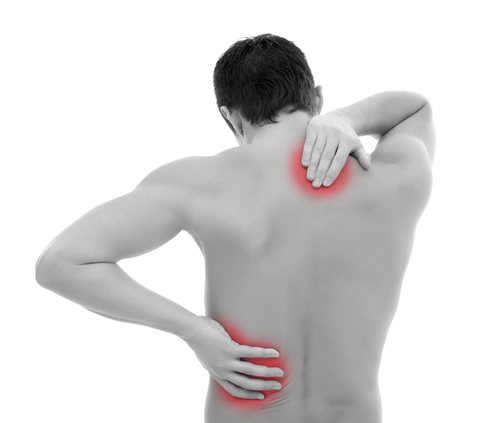Back and neck pain is one of the leading causes of lost work time and affects approximately 75% of the population of the United States at some point in their lives. The most common causes are sprain, strain, or spasm – but it can also be due to disc problems brought on by injury, wear and tear, age, osteoarthritis, osteoporosis, and other conditions.
Types of Back and Neck Pain
There are several types of back and neck pain that will determine the treatment options for your relief and recovery:
Acute Pain. The most common type of back and neck pain, acute pain is severe short-term pain, which can be debilitating and lead to more intense and prolonged pain. It’s commonly due to muscle strain or other soft tissue sprain (ligaments or tendons) and can be caused by sudden force such as whiplash from a car accident, straining the neck from sleeping in the wrong position, or a strain from carrying something heavy.
Chronic pain. Chronic pain is unrelenting and can persist for years. There are many factors that may affect the development of chronic pain – including age, depression and the presence of nerve damage.
Neuropathic Pain. Often burning and shooting, neuropathic pain is a complex and chronic pain where the nerve fibers may be damaged, dysfunctional or injured.
Nocieptive Pain. Localized pain, which is sharp, aching or throbbing. Trauma, arthritis and post-operative pain are examples of nocieptive pain.
The Surgical Option
Of course, non-invasive treatment is always preferable over surgery. In the case of back and neck pain, non-invasive treatment may involve physical therapy, non-steroidal and anti-inflammatory drugs, epidural steroid injections, trigger point injections, biofeedback and nerve blocks. However, if non-invasive treatment is ineffective for you, and you’re unable to complete basic daily activities without pain, surgery may be recommended by your physician.
There are various surgical options that your physician will discuss with you in detail if he or she believes surgery is the best treatment for your condition. Some surgical options are minimally invasive, such as microdiscectomy (for a herniated disc), while other types of surgery such as a posterolateral fusion (for degenerative disc disease) are more extensive.
If you’re suffering from neck or back pain that has not diminished after months of non-surgical treatment, you should consult with your physician to discuss a surgical alternative. When necessary, surgery – in combination with continued therapy and precautions – will help lead to a pain-free life for years to come! Contact us today!

